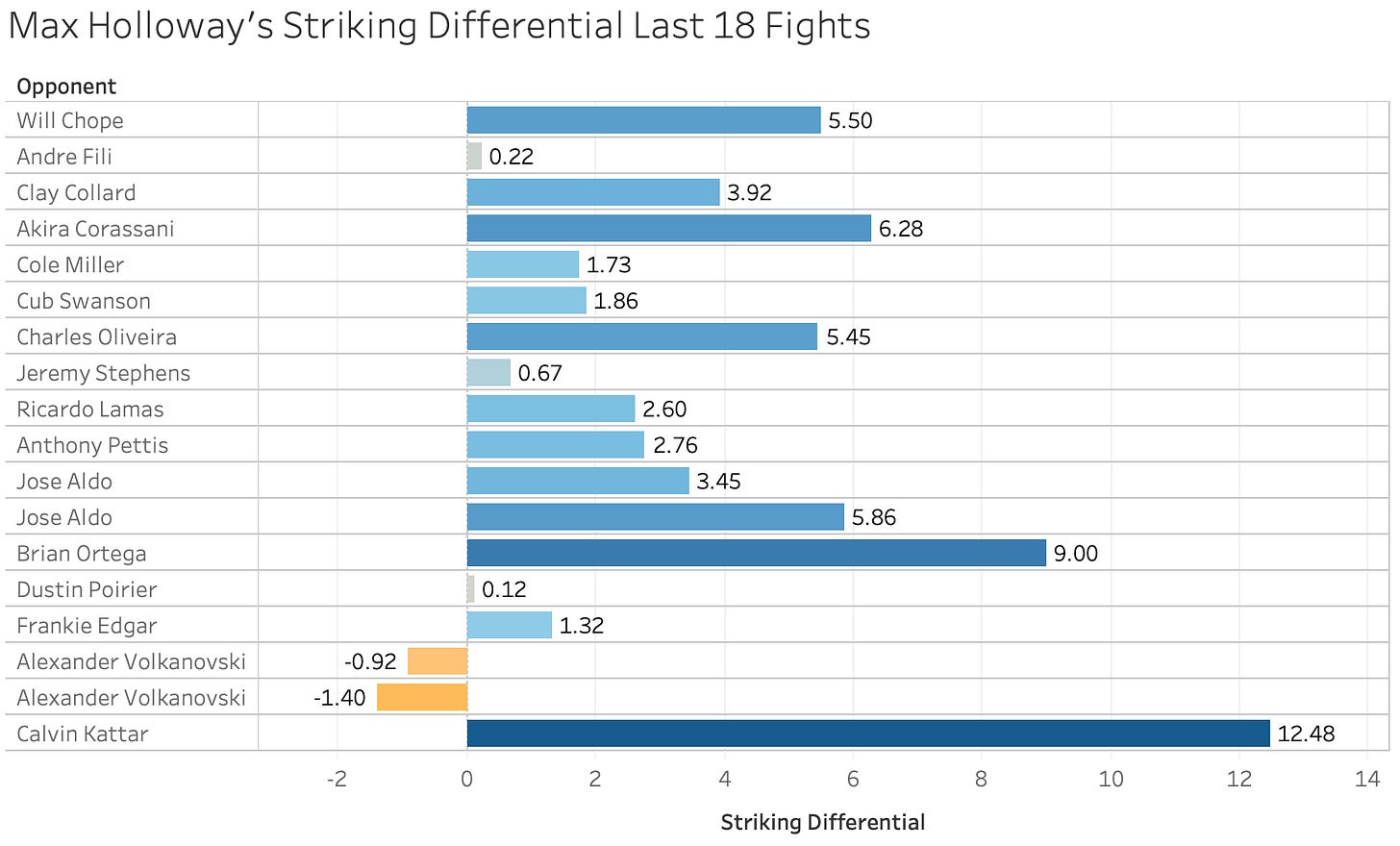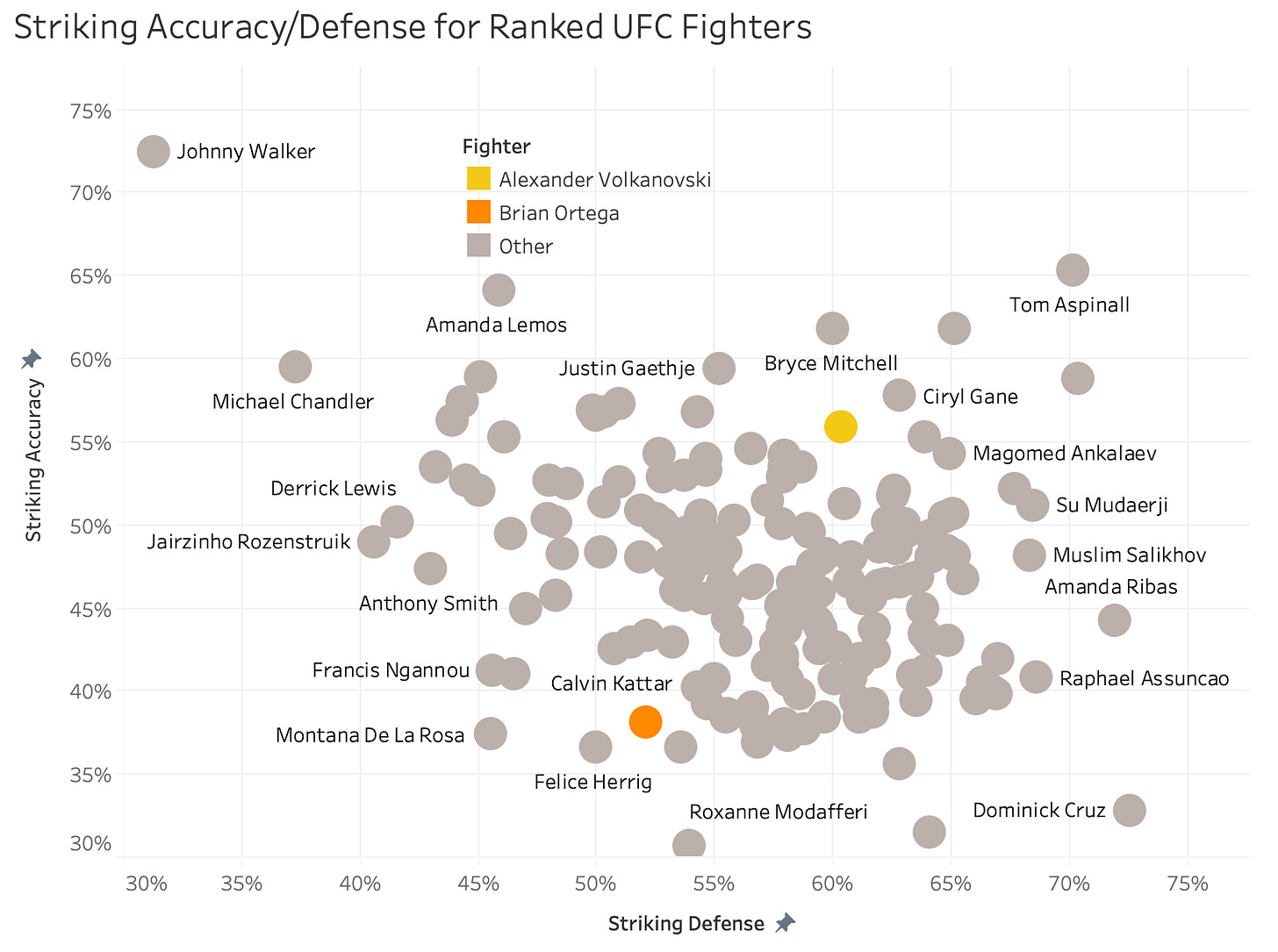Even the 'new' Brian Ortega might not be enough to best Alexander Volkanovski
One of the biggest questions, if not THE biggest question, going into the main event of UFC 266 is which Brian Ortega is going to show up to face Alexander Volkanovksi. Prior to his fight against Chan Sung Jung, Ortega was an opportunistic finisher who relied on his striking power and prolific submission ability to win fights despite being outlanded.
However, against Jung, Ortega came out with an entirely different style and strategy. He was able to control distance in the striking realm and outlanded “The Korean Zombie” 127 to 62. Ortega managed to increase his successful volume and activity while retaining his power as he added a pair of knockdowns in the 25-minute fight.
Going into the contest against Jung, Ortega has a career striking differential of -3.29 (significant strikes landed per minute minus significant strikes absorbed per minute). That one fight caused a sizable increase in his differential, which currently stands at -1.69. His +2.60 differential against Jung was only the second time he had a positive differential in the UFC and by far the highest of his career.
Despite that performance, “T-City” enters this fight as the underdog and for good reason. Even after showing drastic improvement, he may still struggle to outland the current UFC featherweight champion. Volkanovski currency holds a +2.71 striking differential in the UFC, which is the sixth highest rate among ranked fighters. He has never been outlanded throughout his nine-fight UFC career, and he is one of the few fighters who has maintained impressive striking stats after fighting Max Holloway.
In fact, since dropping a decision against Conor McGregor in 2013, Holloway has outlanded all of his UFC opponents outside of Volkanovski. During the 18-fight stretch, Holloway has a +3.04 differential. Without his two-fight series against Volkanovski, that rises all the way to +3.93. There are currently only two ranked fighters with career striking differentials higher than that measure in the UFC and they both have been feeding on the opposition in heavyweight heaven, Tom Aspinall (+4.83) and Chris Daukaus (+8.55).
Not only did Volkanovski outland Holloway, but he also found a way to slow down the deluge of strikes that fans are used to seeing from the former champion. For his UFC career, Holloway attempts 15.57 significant strikes per minute. However, in the two fights against Volkanovski, he managed only 12.12 and 10.72 attempts per minute respectively. Those more knowledgeable about striking, footwork and denying entries can better explain how Volkanovski was able to slow Holloway’s volume, but it was certainly apparent in the numbers.
Ortega’s career significant strikes attempted per minute rate is only 11.27. If Volkanovski is able to cause that number to drop, it could be disastrous for the challenger. On top of that, Ortega is one of the least accurate ranked fighters in the promotion. He has landed only 38% of his significant strike attempts in the UFC, which is the 13th lowest accuracy among ranked fighters.
In a pure striking match, the fight seems to heavily favor Volkanovski. He will likely be able to control the pace of the striking encounters and get the better of the exchanges. However, Ortega could also remain a dangerous threat throughout the 25-minute title fight. Despite the negative striking differential, Ortega averages 0.66 knockdowns per 15 minutes, which is above average for a ranked fighter (0.51). He averages 1.10 submission attempts per 15 minutes and has three submission finishes in nine fights.
On the other hand, Volkanovski has only been knocked down once in the UFC, and he has not even allowed an opponent to register a submission attempt. The most likely outcome of this fight is the champion controlling the striking on the way to a one-sided decision. However, Ortega’s finishing ability and his extremely improved striking add a high degree of uncertainty.






